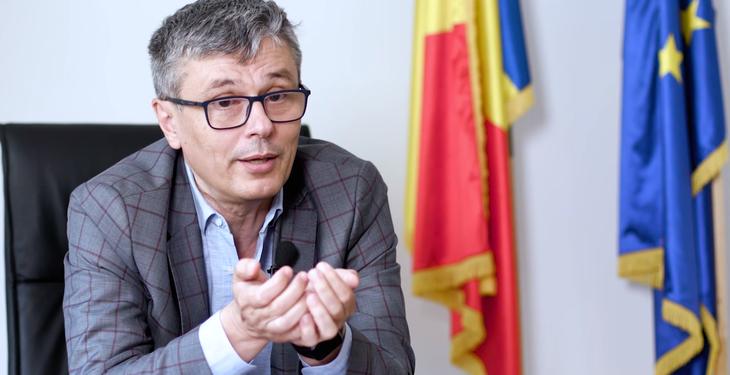Minister of Energy Virgil Popescu had meetings with members of the European Commission in which he detailed the projects from PNRR, announcing that the proposed target for renewables has already been increased to 34%, according to an interview offered to economedia.ro.
“We had two very important meetings. The first was with Vice President Margrethe Vestager. The meetings touched topics such as the restructuring of the Oltenia Energy Complex, the Hunedoara Energy Complex, the National Uranium Company and PNRR. We had discussions on the whole energy chapter on several points, mainly with reference to decarbonization. After a very good meeting with Mrs Vestager, we met with the Deputy Secretary-General of the Commission – a much more technical meeting on all aspects of the PNRR. I was together with the President of the Competition Council, with the Secretary of State Dragan and with the Ambassador Luminița Odobescu from the Romanian Representation to the EU. Everything revolved around decarbonization, so that in 2035 we reach a 55% reduction in CO2 emissions. They were very interested in what is happening at CE Hunedoara, CE Oltenia and how we see the removal of coal-based energy production capacities and what we replace them with,” said the minister.
“They are very well informed, they had a list of all production capacities. They were pleasantly surprised when I told them that the Mintia thermal power plant (part of CE Hunedoara) has been closed for about 4 months because it no longer has an environmental permit. We discussed the specific problem with decarbonization, I told them that we already have a phase-out agreement on coal production with the unions in Hunedoara, that we are in the restructuring plan at CE Oltenia and that, depending on how it progresses, we have made a commitment for Romania to replace coal, but we need natural gas.
We have dismantled a myth related to Romania’s ambitions regarding renewables. We were constantly told that Romania did not have enough ambitions regarding the renewable energy plan. I don’t think they were informed enough, I showed them the Eurostat 2019 and 2020 statistics, which show that Romania has reached the target of the percentage of renewable energy set for 2020, of 20% of the total, since 2019. We already had 24.7% in 2020, unlike other states – such as Germany, the Netherlands and France, which did not reach this target,” added Virgil Popescu.
“Romania has made great efforts, because at the beginning the technology was not advanced and it was expensive and the Romanian citizens pay that green certificate in the cost of the bill. And there is no need to talk about green taxation in the green sector. I gave them the example of the energy mix in Romania: the production of energy based on coal – maximum 20% when it goes to the max, and the production based on gas – 10%. The rest of the energy production comes from hydro, solar renewable energy and nuclear energy. So the difference of 60-70% is non-polluting energy, without high CO2 emissions. From the moment I explained this, there was no question that Romania did not have ambitious targets.
And I told them that in the national plan for climate change Romania has assumed a target of 30.7% renewable energy from total energy production, but we in writing said that we raise the target to 34% because we also have the Modernization Fund, whose value has practically doubled due to the increase in the cost of the CO2 certificate,” the Minister of Energy also said.
